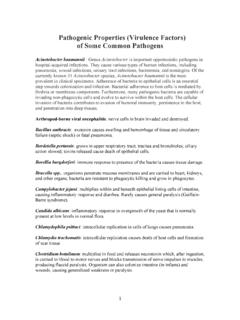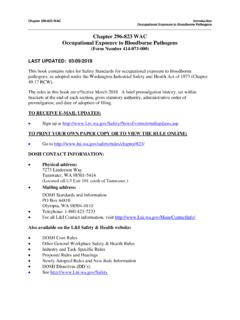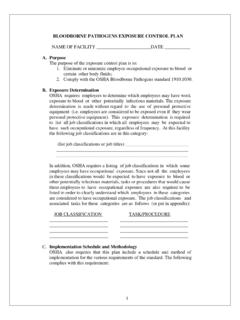Transcription of BLOODBORNE PATHOGENS IN SCHOOLS - Creighton …
1 BLOODBORNE PATHOGENS IN SCHOOLS INTRODUCTION As sure as children fall while learning to walk, students experience cuts, bruises and other injuries. In times past, little thought was given to treatment of such injuries. However, in today s environment it s critical that school professionals plan a safe response to children in need. Whether in the classroom, on a playing field or on a school bus, all school employees must know the potential danger of BLOODBORNE PATHOGENS . Guidelines have been developed by the Centers of Disease Control (CDC) and the Occupational Safety and Health Administration (OSHA) that can protect you from BLOODBORNE PATHOGENS . These guidelines outline a method for you and your school system to follow in order to substantially reduce the risk of contracting a BLOODBORNE disease while on the job. OSHA has developed a standard to protect anyone who can reasonably anticipate contact with blood or potentially infectious body fluids while at work.
2 OSHA recommends that school systems identify the personnel whose job duties expose them to blood and potentially infectious body fluids. Not every school employee is occupationally exposed to BLOODBORNE PATHOGENS . However, it s important that every school employee understands the dangers of infection and safe practices to minimize risk. BLOODBORNE DISEASES BLOODBORNE PATHOGENS are microorganisms carried by human blood and other body fluids. The two most common are the hepatitis B virus (HBV), hepatitis C (HBC) and the human immunodeficiency virus (HIV). Many people think of AIDS when discussing BLOODBORNE PATHOGENS , but actually HBV is much more common. According to the Centers for Disease Control, each year in the approximately 500,000 people become infected with HBV, as compared to about 40,000 individuals that may contract HIV. Unfortunately, children are as prone to BLOODBORNE diseases as adults are. That means you are as much in danger of infection from the children you work with as any other group in society.
3 1 HBV Hepatitis means inflammation of the liver . Most people suffering from HBV will heal in approximately six months. But the virus can be life threatening-leading to cirrhosis and almost certain death. If you become infected with HBV: You may suffer from flu-like symptoms (fatigue, weight-loss, fever or diarrhea). You may require hospitalization. You may not exhibit any symptoms, being unaware that you are a carrier. Your blood, saliva and other body fluids may be infected. You may spread the virus to sexual partners, family members and even unborn infants. Symptoms of this disease are hard to pin down. Many contagious people show no signs or symptoms whatsoever. Only blood tests can positively identify the disease. HBC It is spread by direct contact with the blood of an infected person. Once transmitted, the incubation period is an average of 45 to 75 days. Only 25% to 30% of infected individuals show any signs of infection, and those signs may not be recognized.
4 Symptoms of HCV are similar to those of HBV (see above). Approximately 4 million Americans are currently infected with HCV, and an estimated 36,000 to 242,000 new infections occur in the United States each year. About 15% of HCV-infected individuals clear the virus, and about 85% go on to develop chronic hepatitis C. Chronic liver disease may develop in 70% of the individuals with chronic hepatitis C, resulting in 8,000 to 10,000 deaths each year. Infection with HCV is the most common reason people have liver transplants in the United States. HIV The human immunodeficiency virus attacks the body s immune system, causing the disease known as AIDS. At present, there is no vaccine to prevent AIDS. If you contract HIV: You may suffer from flu-like symptoms (fever, diarrhea, fatigue). You may carry the virus without showing symptoms for several years. You will eventually develop AIDS. You may fall victim to AIDS-related illnesses including neurological problems, cancer and other opportunistic infections.
5 HIV is transmitted mainly through sexual contact, but also may be spread by contact with blood and body fluids. HIV is not transmitted by touching or working around people who carry the disease. 2 WORKPLACE TRANSMISSION Knowing how these dreaded diseases are transmitted can be your first line of defense from infection. HBV, HCV, HIV and other PATHOGENS may be present in blood and other materials, such as: Body fluids containing visible blood. Semen and vaginal secretions. Torn or loose skin. BLOODBORNE PATHOGENS can cause infection by entering your body through: Open cut and nicks. Skin abrasions. Dermatitis. Acne. The mucous membranes of your mouth, eyes or nose. Special-education employees should take extra caution while working with severely disabled children. Some children may be more: Vulnerable to injury. Likely to have special medical needs. Dependant on adults for personal care.
6 ACCIDENTAL INJURY You can become infected by cutting yourself with a contaminated sharp object like: Broken glass Sharp metal Needles Knives Exposed ends of orthodontic wires. INDIRECT TRANSMISSION BLOODBORNE diseases can also be transmitted indirectly. This happens when you touch a contaminated object or surface and then transfer the infection to your: Mouth Eyes Nose Non-intact skin Sound unlikely? Not when you consider HBV can survive on surfaces dried and at room temperature for at least a week. Contaminated surfaces are a major factor in the spread of HBV. 3 EXPOSURE CONTROL PLAN OSHA recommends that every school system create a written Exposure Control Plan (ECP) that s made available to every school employee. The ECP will: Identify the personnel at greatest risk for exposure. Analyze the potential hazards of each job description. Determine what measures will be taken to reduce the risk of exposure to BLOODBORNE PATHOGENS on the job.
7 STANDARD PRECAUTIONS Most approaches to infection control are based on the concept of Standard Precautions-treating all blood and body fluids as if they were potentially infectious. This approach is critical because it is impossible to tell who is infected with HBV, HCV or HIV simply by appearances. Many people who carry infectious disease have no visible symptoms and no knowledge of their condition. Victims of HBV, HCV and HIV come from: All age groups Every socioeconomic class Every state and territory Rural areas and inner cities. Remember that an exposure can lead to infection. Using Standard Precautions may literally save your life. REDUCING YOUR RISK Reducing your risk of exposure to BLOODBORNE PATHOGENS means you need to do more than wear gloves. To protect yourself effectively use: Work practice controls Personnel protective equipment Engineering controls Housekeeping Hepatitis B vaccine.
8 Alone, none of these five approached is 100-percent effective. They must be used together to protect you from HBV, HCV and HIV. 4 ENGINEERING CONTROLS Your school system will provide physical or mechanical systems that eliminate hazards at their source. Their effectiveness usually depends on you. Know what engineering controls are available at your school and use them. For example, appropriate containers must be used for disposing of regulated waste and towels soaked with blood or body fluids. WORK PRACTICE CONTROLS Work practice controls are specific procedures you must follow on the job to reduce your exposure to blood or other potentially infectious materials. The school system will assign personnel to deal with BLOODBORNE hazards on a regular basis. These employees may include: A person trained in BLOODBORNE PATHOGENS safety to give first-aid treatment to students A custodian or trained person responsible for cleaning up all body fluid spills.
9 HANDWASHING The most important work practice control is handwashing. Good handwashing keeps you from transferring contamination from your hands to other parts of your body or other surfaces you may contact later. You should wash your hands with nonabrasive soap and running water: Every time you remove your gloves or other PPE. If skin or mucous membranes come in direct contact with blood or other body fluids, wash or flush the area with water as soon as possible. Where handwashing facilities are not available, such as a school bus, your employer will provide an antiseptic hand cleanser or antiseptic towelettes. Use these as a temporary measure only. You must still wash your hands with soap and running water as soon as you can. PERSONAL HYGIENE Here are more ways to protect yourself from BLOODBORNE PATHOGENS : Minimize splashing, spraying, spattering and generation of droplets when attending to an injured student or co-worker, especially where blood is present.
10 Don t eat or drink, smoke, apply cosmetics or lip balms, or handle contact lenses where there is likelihood of exposure. Don t keep food and drink in refrigerators, freezers, shelves, and cabinets or on countertops or benchtops where blood or other potentially infectious materials are present. 5 PERSONAL PROTECTIVE EQUIPMENT The type of personal protective equipment or PPE appropriate for your job, varies with the task and the exposure you anticipate. PPE you should wear may include: gloves, masks, aprons, lab coats, face shields, protective eyewear, masks, mouthpieces and resuscitation bags or other ventilation devices. If you clean up blood or body fluids: Wear appropriate PPE Use solution of one part bleach to 100 parts water or one-fourth cup bleach to one gallon of water. Disinfect mops and cleaning tools after the job is done. Your school system will issue personnel protective equipment or make it readily accessible. In addition, your school system will maintain, replace or dispose of any PPE at no cost to you.


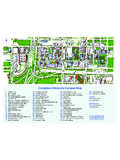
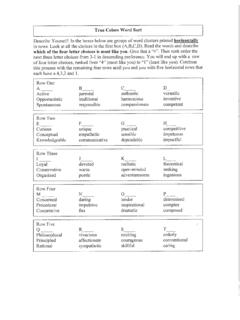

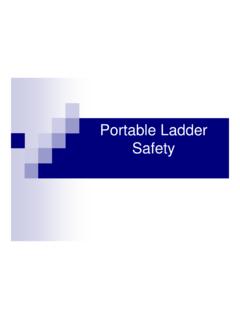

![Hearing protection [Read-Only] - Creighton University](/cache/preview/9/6/e/e/8/f/d/c/thumb-96ee8fdc2111eb2b05b9b613f7af1575.jpg)




